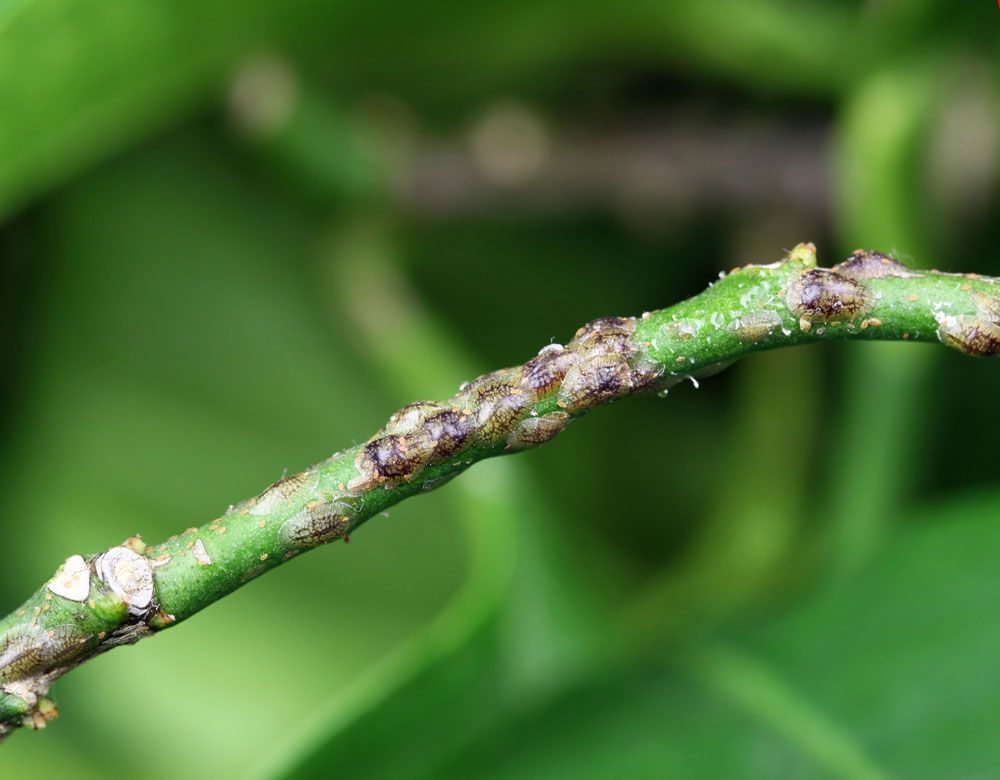
Brown Soft Scale – Coccus hesperidum
Brown Soft Scale: Appearance, Territory, Damage, and Life Cycle
Latin Name: Coccus Hesperidum
Appearance: Scale insects may be extremely aggravating and difficult to control. They are motionless for most of their lives and frequently elude notice when their numbers are low. Brown soft scales develop on houseplant stems and leaves as tiny, flat, oval, yellowish-brown lumps. Brown soft scales with piercing-sucking mouthparts feed on plant sap and emit honeydew, a delicious, sticky fluid
Brown soft scale can be observed on both the stems and the leaves. When fully developed, it is around 4-5mm long (ca. 1/8-in) and has an oval body shape, however, shape might vary depending on where it grows on the plant. When viewed from the side, the body is relatively flat, barely slightly domed. Scales can be speckled with brown patches and range in color from yellow-green to yellow-brown. Older scales frequently turn a deeper brown color.
Hosts Plants: It has been claimed that brown soft scale feeds on hundreds of different plants. It can live on almost any greenhouse plant; however, it appears to favor perennials over annuals. Ferns are a popular host.
Territory: The silky brown scale Coccus Hesperidum is a widespread pest in greenhouses worldwide and is found in tropical and subtropical climates. It may be found outside in the deep South, along the eastern shore of Virginia, and as far north as southern Vancouver Island on the west coast.
Damage Insect Cause: Brown soft scale is perhaps the most common scale seen on indoor plants. Brown soft scale infestations can develop so dense that they encrust the host plant’s stems and petioles. They also settle on leaves, mainly along midribs, and on fruit on occasion. Considerable colonies extract a large number of plant fluids and can induce wilting, although they seldom kill their host. Immatures and adults produce a lot of honeydew, which acts as a breeding ground for sooty molds. These fungi prevent photosynthesis and make afflicted plants seem unappealing. Other insects, like ants and wasps, are drawn to the honeydew.
Life History and Habits: Intermediate. When eggs are deposited, they develop into first-stage nymphs, or crawlers, within the female. Within a few days, crawlers scatter and find a suitable feeding spot. They molt into the second stage, passive nymph, after about a week. In approximately a month, winged adult males and females emerge. Indoors, six to seven generations might occur every year.
